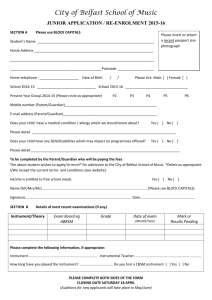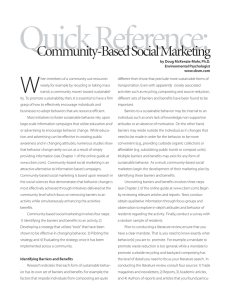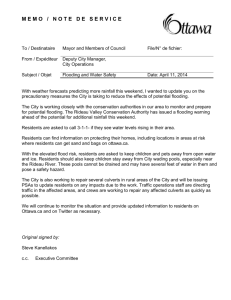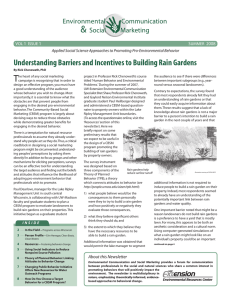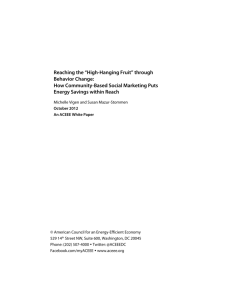Energy Data One-Pager
advertisement
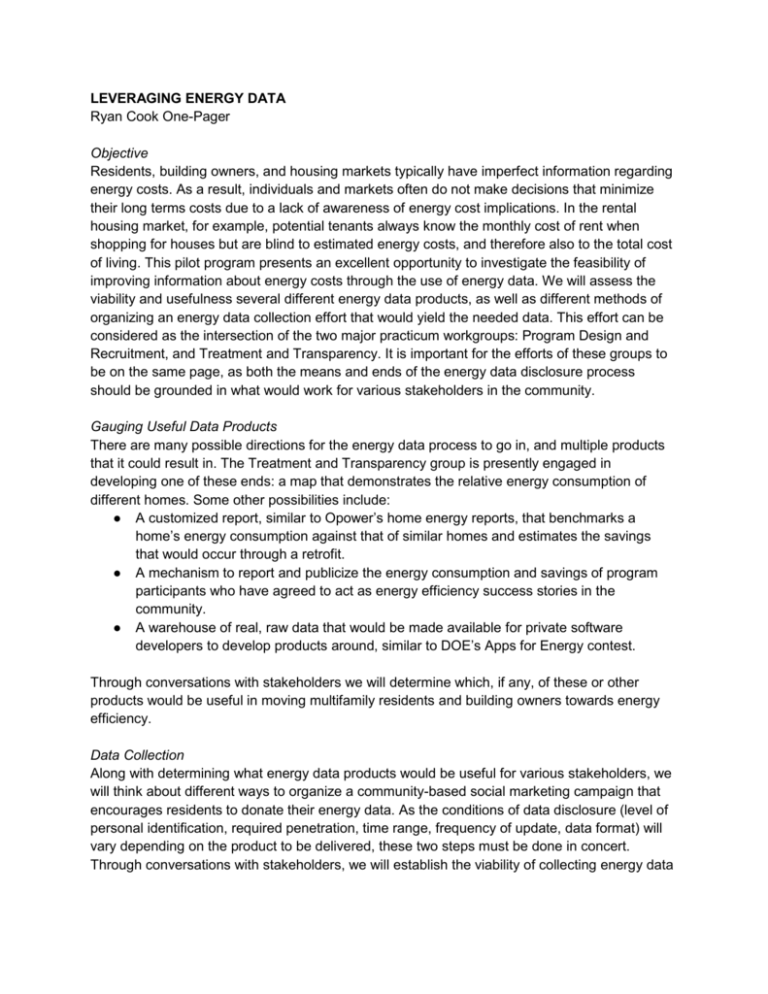
LEVERAGING ENERGY DATA Ryan Cook One-Pager Objective Residents, building owners, and housing markets typically have imperfect information regarding energy costs. As a result, individuals and markets often do not make decisions that minimize their long terms costs due to a lack of awareness of energy cost implications. In the rental housing market, for example, potential tenants always know the monthly cost of rent when shopping for houses but are blind to estimated energy costs, and therefore also to the total cost of living. This pilot program presents an excellent opportunity to investigate the feasibility of improving information about energy costs through the use of energy data. We will assess the viability and usefulness several different energy data products, as well as different methods of organizing an energy data collection effort that would yield the needed data. This effort can be considered as the intersection of the two major practicum workgroups: Program Design and Recruitment, and Treatment and Transparency. It is important for the efforts of these groups to be on the same page, as both the means and ends of the energy data disclosure process should be grounded in what would work for various stakeholders in the community. Gauging Useful Data Products There are many possible directions for the energy data process to go in, and multiple products that it could result in. The Treatment and Transparency group is presently engaged in developing one of these ends: a map that demonstrates the relative energy consumption of different homes. Some other possibilities include: ● A customized report, similar to Opower’s home energy reports, that benchmarks a home’s energy consumption against that of similar homes and estimates the savings that would occur through a retrofit. ● A mechanism to report and publicize the energy consumption and savings of program participants who have agreed to act as energy efficiency success stories in the community. ● A warehouse of real, raw data that would be made available for private software developers to develop products around, similar to DOE’s Apps for Energy contest. Through conversations with stakeholders we will determine which, if any, of these or other products would be useful in moving multifamily residents and building owners towards energy efficiency. Data Collection Along with determining what energy data products would be useful for various stakeholders, we will think about different ways to organize a community-based social marketing campaign that encourages residents to donate their energy data. As the conditions of data disclosure (level of personal identification, required penetration, time range, frequency of update, data format) will vary depending on the product to be delivered, these two steps must be done in concert. Through conversations with stakeholders, we will establish the viability of collecting energy data of varying kinds, and will work towards developing a marketing plan to collect the required information. Brendan Comments Ryan, I get the sense you were playing a bit of a coordinating role on your team, then tried to fill in a gap. Two things – First, your proposed scope of work, notably figuring out ways to source asset & energy data through some sort of CBSM effort, is essentially the same scope of what Alex & Yael are working on. If you go this route, you will benefit by working directly with them. You need to (ASAP) articulate what a couple of CBSM strategies to solicit voluntary population of data (either pressing the “green button” or entering a bunch of pertinent info on a buildings’ conditions) could actually be done. Then you can test these CBSM designs with a few stakeholders, and iteratively redesign the CBSM processes.

